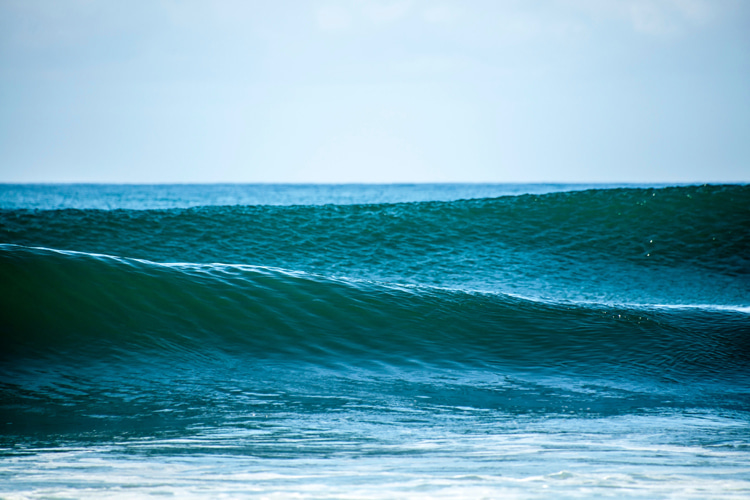Surfing is largely influenced by wave grouping and the interplay of constructive and destructive interference. Let's understand how they affect the quality of the surf.
Waves begin their life with the wind. It's the original and most fundamental principle - without wind, there are no waves.
The friction created by wind blowing over the ocean surface initiates the formation of ripples, which gradually grow into waves.
You can easily recreate this process by blowing a hair dryer over a surface of water.
The intensity of these waves is directly related to the wind's strength and duration.
It's the concept of wind fetch, which refers to the length of water over which a given wind has blown without obstruction.
It is a crucial factor in wave formation.
The longer the fetch, the more time and distance the wind has to transfer energy to the water, resulting in bigger and more developed waves.
The fetch significantly influences the size and power of waves generated in a body of water, as it determines the amount of energy the wind can impart to the water's surface.
Therefore, storms such as hurricanes and northeasters are known for generating humungous waves that can reach over 50 feet in height before even reaching the coastline.
These waves, once formed, can travel thousands of miles across the ocean, maintaining their energy thanks to their long wavelengths (distance between two crests) and wave periods (time between two crests).
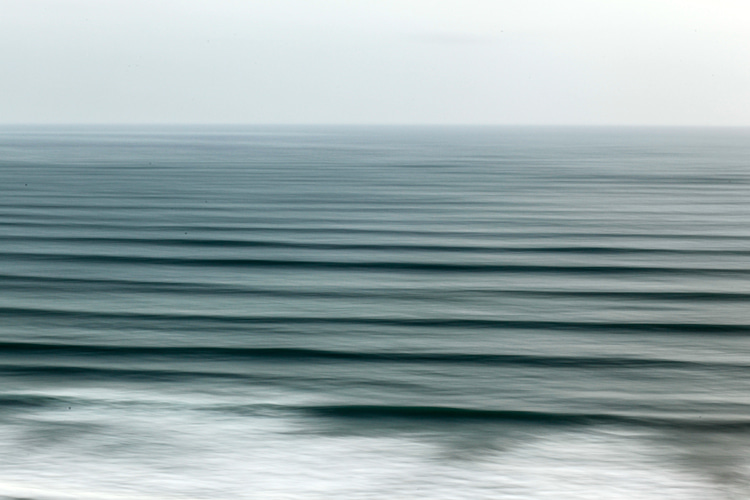
Wave Grouping
The essence of wave grouping lies in the interaction of waves traveling at different speeds.
When these wave trains meet, they form groups or sets, with some waves being noticeably larger than others.
The phenomenon becomes pronounced in deep waters, where waves from distant storms interact with local waves.
As these waves approach the shore, they encounter the shallower seabed, which further amplifies their size, forming the most significant waves when the crests of both waves coincide.
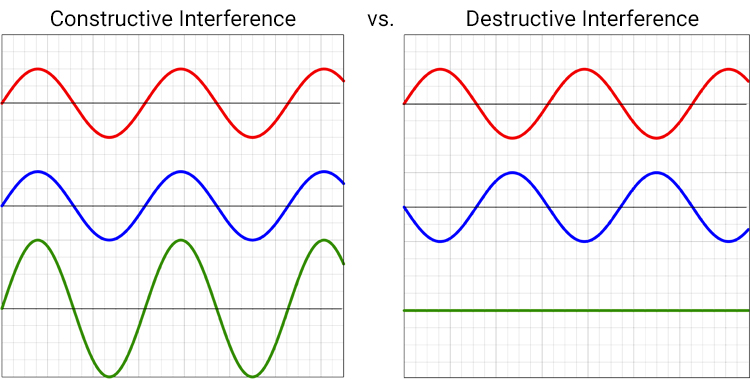
Constructive vs. Destructive Interference
The interaction of different waves generates two main types of interference: constructive and destructive.
Constructive interference occurs when the crests of two waves - or wave trains - align perfectly, combining their strengths to form bigger waves: 1 +1 = 2.
In theory, this is often the surfer's dream, leading to the formation of bigger, more powerful waves.
On the other hand, destructive interference happens when a wave crest meets a trough, resulting in a cancellation effect that leads to smaller, less powerful waves: 1 + (-1) = 0.
The dynamic interplay of these two types of interference helps create the varied and unpredictable nature of the ocean's waves.
But they only explain some things. Why? Because the phenomena are never perfectly aligned in the world's oceans.
There are wave trains of all sorts traveling at different speeds and in different directions all over the world's oceans.
Some will positively superimpose, with peaks and troughs from both wave groups coinciding almost precisely at the same point, creating bigger waves.
Others will cancel out, with peaks and troughs from both wave groups unevenly aligned, resulting in near-zero wave heights.
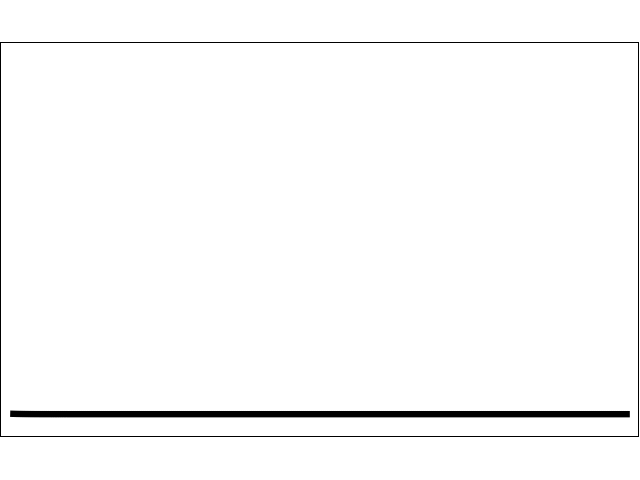
Mystery Sets
Understanding the patterns of wave grouping can significantly enhance a surfer's experience, especially by carefully analyzing surf forecasts and surf reports.
By observing the frequency and size of wave sets from the shore, surfers can anticipate the arrival of larger waves.
But it's never 100 percent predictable.
"It remains a mystery why, for example, one day, there are seven waves in a set, ten minutes between sets, and the third wave in the set is the biggest, whereas another day, there might be three waves in a set and only five minutes between sets, but then every 20 minutes a 'super-set' arrives containing two much bigger waves," explained Tony Butt and Paul Russell in the book "Surf Science."
"There may be a relation between the number of waves in a set and the length of the fetch that produced the waves in the first place."
"For example, some people have noticed that longer fetches, where the wind blows steadier over larger stretches of water, produce sets with more waves in them."
Constructive and destructive interference is a fundamental concept in physics and engineering, with applications in acoustics, optics, and wave-based technologies.
These principles apply to sound waves, light waves, or water waves.
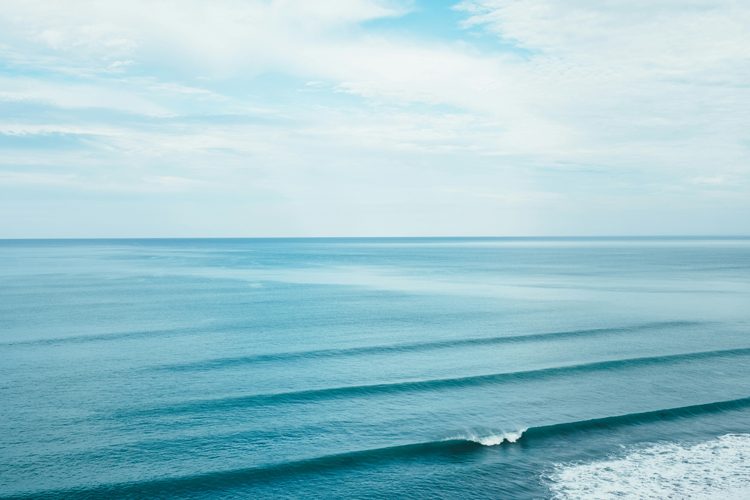
The Science of the Surf
Surf science extends beyond the mere act of understanding the behavior of waves.
It encompasses a deep understanding of meteorological and oceanographic conditions.
Factors like wind direction, storm patterns, dispersion, ocean currents, tides, and seabed topography all play a critical role in shaping the waves.
The better surfers understand and decode these patterns, the better they can plan where and when to paddle out for a dream session and position themselves to catch the best waves.
A seasoned surfer learns to read these signs, using them to optimize the quality of wave forecasting, thus improving their experience.
Wave grouping and the interplay of constructive and destructive interference are essential variables in creating a dynamic and ever-changing playground for surfing.
